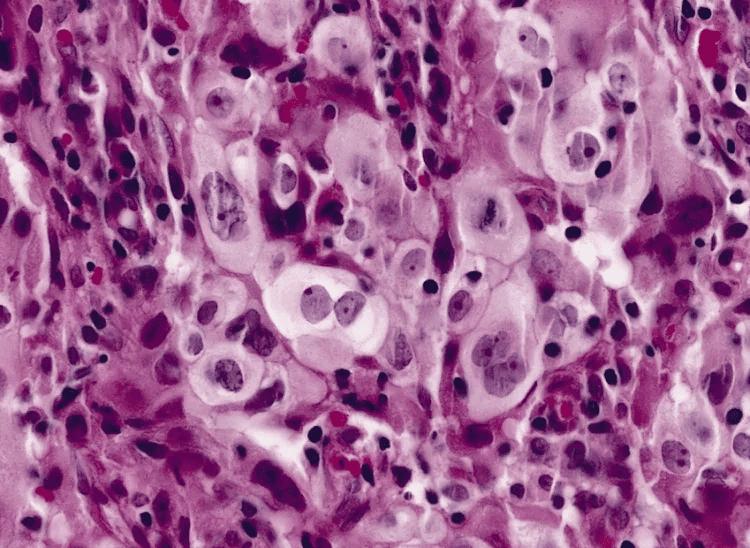KEY TAKEAWAYS
- The MARIPOSA-2 phase III trial assessed the efficacy and safety of ami plus chemo with or without laz in EGFR-mutated (Ex19del or L858R) advanced NSCLC.
- The primary endpoint was PFS, and the secondary endpoints were ORR, OS, intracranial PFS, and safety.
- Results show ami+chemo, with or without laz, boosted PFS, ORR, and IC-PFS vs chemo in previously osi-progressed patients.
Preclinical and phase I studies have demonstrated the potential of amivantamab (ami), an EGFR-MET bispecific antibody with immune cell-directing activity, plus carboplatin-pemetrexed (chemo), a chemotherapy combination commonly used for non-small cell lung cancer(NSCLC), and lazertinib (laz), a CNS-penetrant, 3rd-generation EGFR TKI, to treat EGFR-mutated advanced NSCLC.
Researchers aimed to assess the efficacy and safety of ami plus chemo with or without laz in EGFR-mutated (Ex19del or L858R) advanced NSCLC patients(pts) who have progressed on osimertinib (osi).
The study randomized pts (2:2:1) to receive ami-laz-chemo, chemo, or ami-chemo. The dual primary endpoints were progression-free survival (PFS) for ami-chemo vs. chemo and ami-laz-chemo vs. chemo, assessed by blinded independent central review. Secondary endpoints included objective response rate (ORR), overall survival (OS), intracranial PFS, and safety. Due to hematologic toxicities in the ami-laz-chemo arm, a regimen change was implemented to initiate laz after completing carboplatin.
About 657 pts were randomized (ami-chemo, 131; ami-laz-chemo, 263; chemo, 263). Baseline characteristics were balanced between arms, including the number of pts with a history of CNS metastases (44%–46%). At a median follow-up of 8.7 months, progression-free survival (PFS) significantly improved with ami-chemo (HR, 0.48; 95% CI, 0.36–0.64) and ami-laz-chemo (HR, 0.44; 95% CI, 0.35–0.56) compared to chemo (median PFS, 6.3 and 8.3 vs 4.2 months, respectively; P < 0.001 for both).
ORR was 64% for ami-chemo and 63% for ami-laz-chemo vs 36% for chemo (P < 0.001 for both). Interim OS was immature; HR of 0.77 (95% CI, 0.49–1.21) for ami-chemo vs chemo and HR of 0.96 (95% CI, 0.67–1.35) for ami-laz-chemo vs chemo. Median intracranial PFS was 12.5 months for ami-chemo and 12.8 months for ami-laz-chemo vs 8.3 months for chemo (HR, 0.55 and 0.58; P= 0.001 and P < 0.001, respectively).
Predominant adverse events(AEs) in the ami-containing arms were hematologic, EGFR, and MET-related. Ami-chemo had lower rates of hematologic AEs than ami-laz-chemo. The impact of modifying the ami-laz-chemo regimen on safety and efficacy requires longer follow-up.
The study demonstrated that ami+chemo, with or without laz, significantly enhanced PFS, ORR, and IC-PFS compared to chemo alone in EGFR-mutated advanced NSCLC pts who had progressed on osi.
Clinical Trial: https://clinicaltrials.gov/study/NCT04988295
Passaro A, Cho BC, Wang Y, Melosky B, Califano R, Lee S, Girard N, Reckamp KL, Takahashi T, Felip E, Gentzler RD, Popat S, Nassib William W Jr, Sun T, Shah S, Diorio B, Knoblauch RE, Bauml JM, Garcia Campelo MR, Wang J. Annals of Oncology (2023) 34 (suppl_2): S1254-S1335. 10.1016/annonc/annonc1358



